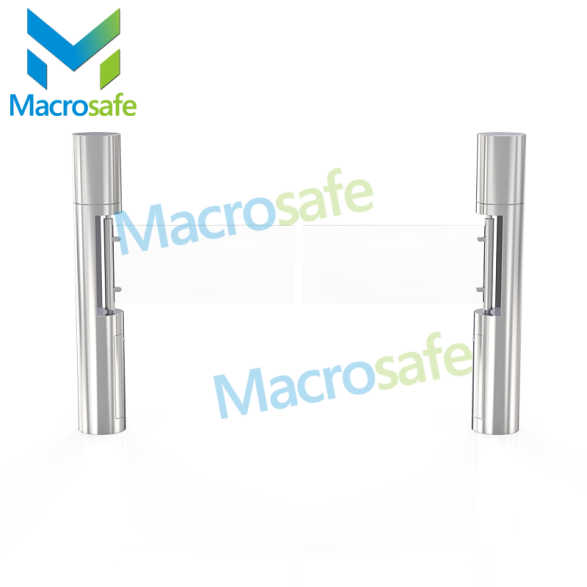Automated access control solutions play a crucial role in ensuring security and managing the flow of people in various environments. Speed gate and turnstiles are two common options for controlling access to restricted areas. In this article, we compare the pros and cons of speed gates and turnstiles, highlighting their distinct features, benefits, and considerations to help businesses and organizations make informed decisions regarding their access control systems.
-
Speed Gates:
Speed gates are automated access control solutions known for their sleek design and advanced features. They offer a more sophisticated and modern approach to access control compared to turnstiles. Speed gates typically feature retractable glass or barriers that open and close upon authorization, allowing individuals to pass through.
Pros of Speed Gates:
– Enhanced security: Speed gates offer higher security levels due to the use of advanced technologies such as facial recognition or biometric authentication. These features provide accurate identification and prevent unauthorized access.
– Improved aesthetics: Speed gates are designed with aesthetics in mind, featuring sleek and modern designs that blend well with various architectural styles. They create a more pleasant and professional environment.
– Increased throughput: Speed gates can process a large number of people quickly and efficiently. The smooth and automated operation helps streamline the flow of individuals, reducing congestion and waiting times.
Cons of Speed Gates:
– Higher cost: Speed gates tend to be more expensive than turnstiles due to their advanced features and design elements. The initial investment and maintenance costs may be higher.
– Space requirements: Speed gates often require more space compared to turnstiles. The installation of speed gates might not be suitable for limited or narrow areas.
-
Turnstiles:
Turnstiles are traditional access control solutions that have been used for many years. They often consist of vertical bars or arms that rotate to allow one person to pass through at a time.
Pros of Turnstiles:
– Cost-effective: Turnstiles are relatively more affordable compared to speed gates. The simplicity of their design and operation contributes to lower purchase and maintenance costs.
– Space-efficient: Turnstiles are a space-saving option, making them suitable for areas with limited space. They can be installed in narrow corridors or entrances.
– Deterrent to tailgating: Turnstiles are effective at preventing tailgating or unauthorized individuals from following closely behind someone who has gained authorized access.
Cons of Turnstiles:
– Limited throughput: Turnstiles usually allow one person to pass through at a time, which can cause bottlenecks during peak times. This results in slower throughput and longer queues.
– Basic security features: Compared to speed gates, turnstiles typically offer simpler security features, such as proximity card readers. They may not provide the same level of security as biometrics or facial recognition technologies.
Conclusion:
Both speed gates and turnstiles offer automated access control solutions with their own sets of pros and cons. The choice between the two depends on specific requirements, budget considerations, and the desired level of security. Speed gates provide enhanced security, aesthetic appeal, and efficient throughput, but come at a higher cost. Turnstiles are more cost-effective and space-efficient but offer limited throughput and basic security features. It is crucial for businesses and organizations to carefully assess their needs and evaluate the advantages and disadvantages of each option to select the most suitable access control solution for their particular environment.





